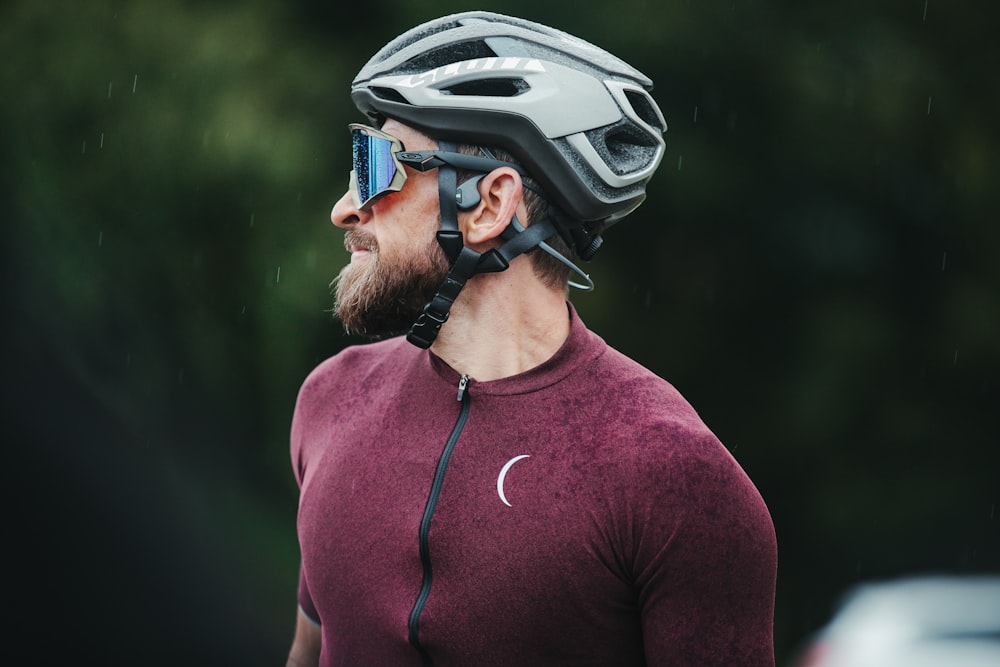Having the right helmet is important for a cyclist. Finding the right headgear can be challenging for most people, especially when there are a lot of options to choose from. They come in a wide range of styles and colors. The good thing is there are some tips and guides that you can use when choosing the right headgear.
It has been a long journey for helmets. The days of poorly ventilated, heavy, and uncomfortable helmets are gone; with the right budget, you can get a light, well-fitting, and attractive helmet. Helmets come in different styles for every niche of cyclists. There are a number of things you need to consider when buying helmets.

Helmet Fit
A well-fitting helmet is going to fit well and not too tight. Take a tape measure then measure the circumference of your head. Wrap it around the middle of the forehead and above the ear, encircling the head completely. When you visit the product page when buying a helmet, you will find the sizing chart. Make sure you choose the right size.
When you want to buy a cheaper helmet, then you will find it in one size. These can fit those people who have medium head size. Those with smaller or bigger heads will be very uncomfortable wearing these helmets.
Impact absorption technologies
When you start to research more about helmets, you are most likely going to come across MIP: Multi-directional Impact Protection System/ this has been designed in a way that reduces rotational forces on the brain when there is an impact between the head and angled objects. These models come with a layer between the helmet and head that has been designed to stop the rotation of the head when inside the helmet. Most big helmet brands use MIPS, and you are going to pay more for helmets that come with this technology.
There are many other technologies apart from MIPS that help in lessening rotational forces on the head. Bontrager has “WaveCel”, which has been designed to soak the impact because it reaches the cyclist’s head, and POC has “SPIN” technology. Endura has its own system called “Koroyd”.
Types of Bike Helmets
With the wide range of options to choose from, you can be sure there is something for everyone no matter their discipline of riding. Helmets are generally divided into three main categories; a road, urban/commuter, and mountain bike.
Urban/Commuter
Urban/commuter helmets have a plain and utilitarian design that allows them to blend easily with the urban jungle. The rounded, bucket-style helmet has become the modern trend. They have generous ventilation holes, size adjustment systems, and even built-in ear protection. Some have lighting at the back so you can be visible when using the road. Other road users behind you will easily see you. Here is a good guide to commuting
City Bike Helmets
Road riding puts more focus on weight, aerodynamics, and ventilation. When you pay a little more on the helmet, then you can expect it to be lighter, provide improved aerodynamics, and well ventilated. Helmets that look flash usually cost more – in the competitive world of road cycling, looks play a big role.
Mountain Biking
When it comes to aggressive downhill riding, many are going to prefer a full-face helmet to offer the other options because it is going to provide maximum protection if a cyclist falls down. For endurance or rougher trail use, the ‘open-face’ helmets are going to provide increased rear head protection. Helmets that allow you to attach a chin guard are becoming more and more popular among cyclists.
If it is cross-country mountain biking, the helmets are going to look like road helmets, but they come with a removable peak and more protection for the back of the cyclist’s head. They are well ventilated and light.
For dirt jump and BMX, the helmets are plain and look like ‘bucket’ helmets. Most of them today have internal size adjustment systems. These helmets are not that good with ventilation, but they do a good job of reflecting the gritty street style of those disciplines.
Maybe you have seen people wearing a chunky black collar when cycling and you wonder what that is. This is known as the Hövding airbag helmet. This type of helmet is usually worn around the neck, and it is going to inflate when you fall. This is going to be a good option for those who have a cool hairdo and do not want to put something on their head when cycling. This is not an option for everyone because it is pricy.
Many people don’t like wearing helmets. If you see at countries that have a strong bike culture and advanced cycling infrastructure, you will notice that most of them don’t wear helmets, a good example is Germany, the Netherlands, and Denmark. There are countries that have made it compulsory for cyclists to have helmets.
There are two things that are certain: practicing safer cycling and being vigilant when using the road, and if something goes wrong and you fall on your head, the helmet is going to come in handy.

